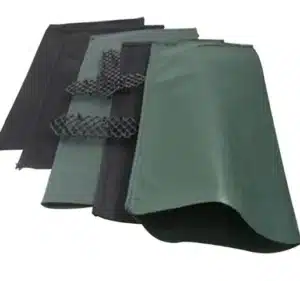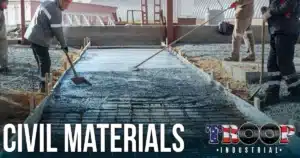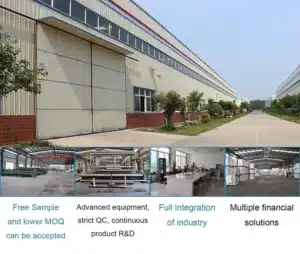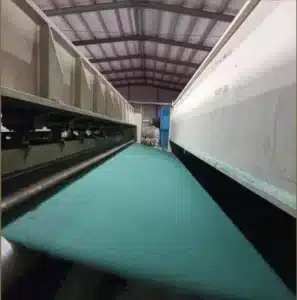You keep hearing “LLDPE liner” on bids. You wonder what it is, where it fits, and how it differs from HDPE. Let’s make it clear and usable.
LLDPE geomembrane is a flexible polyethylene barrier sheet used to contain liquids and gases. It blends strength with high elongation, welds well, and suits ponds, waste covers, mining pads, and secondary containment.
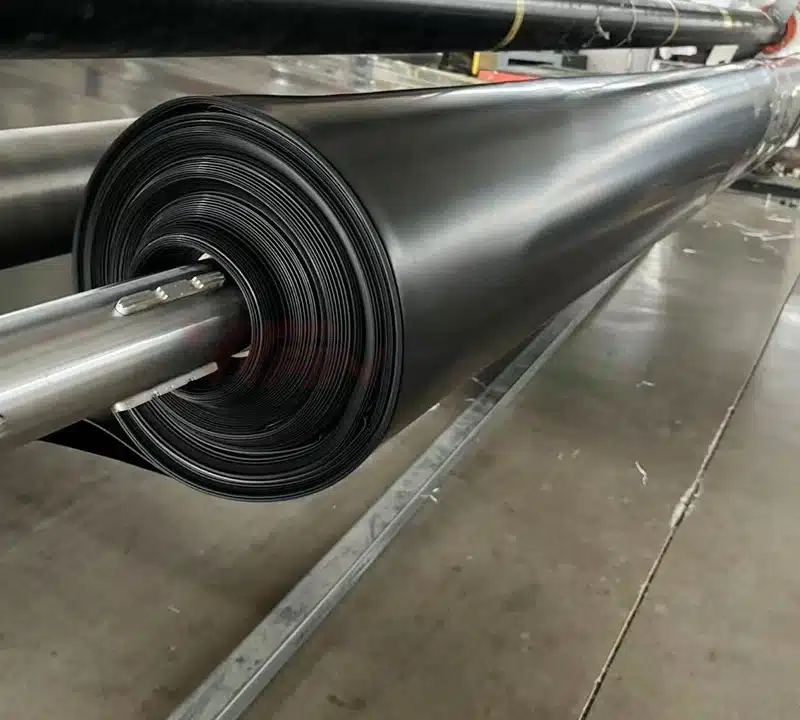
I will walk through definition, material makeup, pros and cons, common uses, standards, differences with HDPE, installation basics, and selection tips. I will keep the tone practical and avoid fluff, so you can make faster, safer choices.
What is the LLDPE geomembrane?
Soft subgrades shift. Fluids seek paths. You need a continuous, durable barrier that follows settlement without tearing.
LLDPE geomembrane is a continuous, low-permeability liner made from linear low-density polyethylene resin with additives for UV and oxidation resistance. It is supplied in rolls, in smooth or textured surfaces, and is field-welded into large sheets.
Dive deeper
Start with the material. LLDPE stands for linear low-density polyethylene. Polymer producers make it by copolymerizing ethylene with short-chain alpha-olefins (often butene, hexene, or octene). That short branching pattern creates a resin that is tough and very ductile. It stretches a lot before it breaks. That high elongation helps on soft or settling ground.
A geomembrane grade needs more than base resin. Compounds include antioxidants, heat stabilizers, and UV stabilizers. Most black liners use about 2–3% carbon black for UV screening. Some specialty grey or white-on-black products use HALS packages and reflective layers to manage heat. The mix aims to resist oxidation, slow down stress cracking, and hold properties for many years.
Manufacturing is usually blown-film or flat-die (calender) extrusion. The film can be mono-layer or co-extruded. Thickness ranges from about 0.5 mm to 2.0 mm in many civil projects, with wider ranges for special work. Surface can be smooth or textured. Texturing comes from blown-film bubble roughness or post-process embossing. It raises interface friction for slopes and cover soils. Rolls ship with labels that show thickness, width, length, lot, and date.
In the field, crews unroll sheets, align overlaps, and weld seams using hot wedge or extrusion welding. Installers then test seams with air-channel pressure (dual track), vacuum box, and peel/shear coupons. When panels pass, crews anchor the liner in trench details, add protection geotextiles, and build cover layers. The result is a continuous barrier that blocks leakage and survives settlement better than stiffer liners.
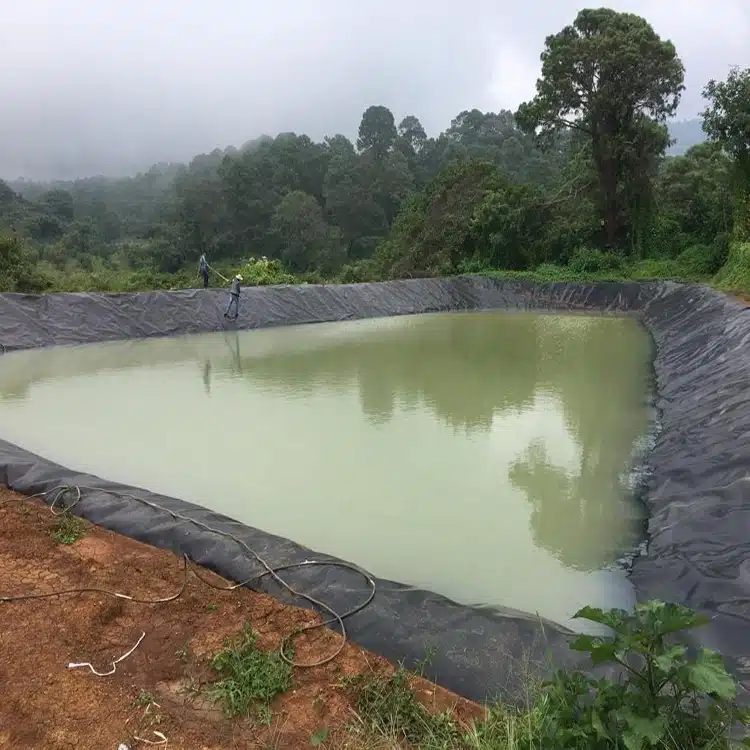
Pros and Cons of LLDPE Geomembrane?
You want the upsides and the trade-offs in one view. That keeps design and buying honest.
LLDPE gives high elongation, good tear resistance, better cold flex, and easy welding. It has lower stiffness than HDPE, lower high-temperature resistance, and can creep more under sustained load without support.
Dive deeper
Let me unpack that. On the pro side, LLDPE shines in flexibility. It tolerates subgrade settlement and differential movement. It resists tearing at details and penetrations better than stiffer films. It welds at slightly lower temperatures and gives wider windows for installers, which helps when the wind shifts or clouds pass. Cold-weather handling is more forgiving because the sheet stays pliable. Interface shear with soils improves when you choose textured LLDPE, which often shows higher peak and residual friction angles than smooth films. Chemical resistance is strong for water, salts, many acids, and many hydrocarbons, though every project still needs a compatibility check.
On the con side, lower stiffness means lower tensile modulus. On very steep slopes under high cover loads, designers must check strain, creep, and interface stability carefully. At elevated service temperatures, HDPE often holds shape better; LLDPE can soften more. For very aggressive chemicals and high temperatures together, specialty HDPE or barrier co-extrusions can outperform LLDPE. Abrasion at exposed edges can be higher if traffic runs directly on the liner—use protection layers. Finally, because LLDPE is very flexible, installers must control wrinkles before welding; large wrinkles trapped under cover can telegraph into the layer above.
A quick table to guide conversations:
| Aspect | LLDPE strength | LLDPE watch-out | Practical note |
|---|---|---|---|
| Flexibility | Excellent elongation | Wrinkle control needed | Deploy early morning; manage slack |
| Welding | Wide temperature window | Clean surfaces required | Keep panels dry; wipe dust |
| Slopes | Good with texture | Check creep and strain | Use textured and proper anchors |
| Cold handling | Pliable in cold | None major | Fewer brittle snaps at low temp |
| Chemicals | Broad resistance | Verify special solvents | Ask for compatibility chart |
What is LLDPE geomembrane used for?
Projects vary, but the need is constant: contain, separate, protect. LLDPE fits where movement and settlement are expected.
Common uses include decorative and aquaculture ponds, landfill covers and interim caps, heap leach pads, process water basins, canal and lagoon linings, wastewater treatment cells, and secondary containment for tanks and pipelines.
Dive deeper
Look at a few typical cases. In ponds and aquaculture, operators want a liner that lays smoothly, tolerates minor subgrade voids, and welds reliably around inlets. LLDPE’s flex and tear resistance help during stocking, net pulls, and routine maintenance. In landfills, LLDPE is widely used for final cover systems. It adapts to long-term settlement while remaining tight under soil and vegetation. Many sites specify textured LLDPE for interface shear safety in the cover stack.
Mining brings another set of loads. Heap leach pads cycle wet/dry and hot/cold. LLDPE’s ductility helps under the ore stack and drip emitters. Designers often use textured LLDPE on slopes under heap loads to keep interfaces stable. In wastewater and industrial basins, owners like the welding speed and wide seam window, especially when daily temperature swings are large. Secondary containment for fuels and chemicals benefits from the barrier plus the flexibility to go around pedestals and pipe racks; still, chemical compatibility must be confirmed.
The common thread is controlled leakage with movement tolerance. Where HDPE might wrinkle and hold that shape, LLDPE relaxes and follows. Where PVC might soften with age, LLDPE keeps backbone with UV packages and antioxidants. Add a protection geotextile above and below in abrasive or rocky sites, and the service life increases further.
What is the difference between HDPE geomembrane and LLDPE geomembrane?
You may stand between HDPE and LLDPE in the same catalog. The choice comes down to stiffness versus flexibility, temperature window, and slope interface behavior.
HDPE is stiffer, with higher modulus and better high-temperature shape retention. LLDPE is more flexible, with higher elongation, better tear, wider weld window, and often higher interface friction when textured.
Dive deeper
Point by point helps. Stiffness and strain: HDPE offers a higher tensile modulus, so it holds flat planes under load better, but it accommodates less strain before yield. LLDPE yields later and extends further, so it follows settlement and minor subgrade movement more safely. Welding window: HDPE welds well but prefers tighter temperature control; LLDPE accepts a wider range, which helps when clouds or winds change panel temperature.
Temperature behavior: at higher service temperatures, HDPE resists softening better. LLDPE remains usable but will exhibit more creep; design should reflect that with support and protection. Interface friction: textured LLDPE often shows higher friction angles with soils and geotextiles compared with smooth HDPE; textured HDPE narrows the gap, but LLDPE’s conformability can still help.
Stress crack and tear: LLDPE’s molecular structure provides strong resistance to tear propagation and good stress-crack behavior in many grades. HDPE can achieve excellent stress-crack resistance with the right formulation, but stiffness can concentrate stress at details. Chemical resistance: both families resist many water-based chemicals; HDPE may lead in some hydrocarbon environments at elevated temperatures, while LLDPE’s broader ductility is an advantage under mechanical strain. In short, choose HDPE for very hot, rigid applications and steep, heavy cover slopes with tight strain control; choose LLDPE for settlement-prone covers, ponds, pads with temperature swings, and details that need flex.

How to install LLDPE geomembrane?
A good liner can still fail with a poor sequence. Clear steps improve speed and quality.
Prepare subgrade, deploy panels in plan order, control wrinkles, weld with qualified parameters, test seams, anchor edges, protect with geotextiles, and build cover in controlled lifts.
Dive deeper
Here is a field-proven flow. Subgrade first: grade smooth, remove sharp stones, and compact to the specified density. If fines are wet or unstable, place a nonwoven geotextile cushion to protect the liner and block fines. Lay panels when the wind is manageable; use sandbags at corners. Keep panels dry and clean where welds will run. Plan overlaps and seam directions so water runs off, not into overlaps.
Welding: Use a hot-wedge for long straight seams; use extrusion for details and tie-ins. Track speed, temperature, and pressure. Keep a test seam log and adjust as air and sheet temperature change through the day. For dual-track seams, run an air-pressure test along the channel. For extrusion seams, use a vacuum box with soapy solution. Cut peel and shear coupons at the frequency the spec requires; test them at the site to validate parameters.
Wrinkle control matters. Deploy in the cool hours. Pull slack toward seam lines before welding. Avoid welding across large wrinkles; cut and re-fit if needed. Anchors: place liner into crest trenches and side trenches per detail, backfill and compact gently. Protection: Place a cushion of geotextile where the soil cover is coarse. Build cover in thin lifts, with low drop heights and ground-pressure equipment. Do not drive directly on the exposed liner. Record panel maps, seam logs, test results, and weather; these documents are as important as the welds.
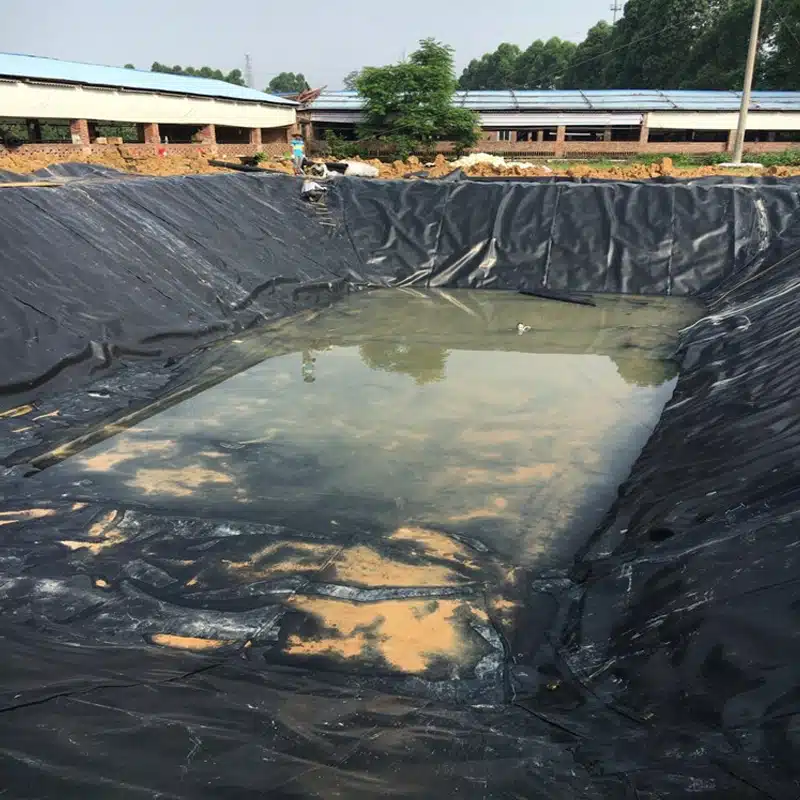
How to choose the right LLDPE geomembrane?
Catalog pages all look strong. A short checklist focuses the choice and speeds approvals.
Match thickness to load and risk, pick surface for friction needs, confirm additives and OIT, verify test data, plan protection layers, and align welding and QA with local practice.
Dive deeper
Start from function. For flexible landfill covers and settlement-prone caps, 1.0–1.5 mm textured LLDPE is a common, safe pick. For ponds and canals with modest cover and no traffic, 1.0–1.5 mm smooth or one-side textured works. For basins with equipment nearby or higher uplift risks, go to 1.5–2.0 mm and use texture on slopes. Where temperatures run high or loads are heavy, ask whether HDPE is required; if settlement still worries you, consider hybrids like LLDPE-based co-extrusions.
Confirm the compound. Ask for carbon black content and dispersion on black liners. Ask for standard and high-pressure OIT (when applicable) to judge antioxidant packages. Request stress-crack performance and puncture values at your thickness. For textured materials, request average asperity height and friction test data with your cushion and cover geotextiles.
Design the system, not just the sheet. Include a subgrade spec, cushion layers, and cover requirements. Define anchor trenches and pipe boot details. Write the welding and testing plan: hot-wedge where possible, extrusion for details, air-channel testing, vacuum box, and peel/shear coupons at named frequencies. Document roll sizes to match site handling and minimize waste. This upfront clarity reduces changes and keeps crews efficient.
My opinion
Pick LLDPE when the ground will move, when daily temperatures swing, or when crews need a wider welding window. Choose texture on slopes, protect with geotextiles, and keep the spec testable. Most “linear headaches” disappear when wrinkles are managed and QA is routine.
FAQ
What does LLDPE stand for?
Linear low-density polyethylene. It is a flexible, tough polyethylene family produced with short-chain branching.
How thick should my LLDPE liner be?
For covers and ponds, 1.0–1.5 mm is common. For pads, basins, or higher risk areas, 1.5–2.0 mm adds safety. Match thickness to load and consequence.
Smooth or textured?
Use textured on slopes and where interface friction matters. Use smooth where protection geotextiles provide cushion and slopes are mild.
How is LLDPE different from HDPE?
LLDPE is more flexible and has higher elongation. HDPE is stiffer and holds shape better at higher temperatures. Pick by movement, temperature, and slope needs.
Can I weld LLDPE in cold weather?
Yes, with proper parameters and dry surfaces. LLDPE stays pliable in the cold, which helps handling. Adjust wedge temperature and speed as ambient changes.
What seam tests are required?
Common checks include air-channel pressure tests on dual-track seams, vacuum box on extrusion seams, and peel/shear coupons at set intervals.
How long does LLDPE last underground?
Service life is long when buried and protected, with proper antioxidants and UV packages. Designers often see multi-decade performance when covered and undisturbed.
What chemicals are compatible?
LLDPE resists many water-based chemicals, salts, and some hydrocarbons. Always request a compatibility chart for your specific fluids and temperature.
Can I expose LLDPE to sunlight?
Short-term exposure during installation is fine. Long-term exposed service needs UV-stabilized compounds and may still benefit from reflective pigments or covers.
What protection layers do I need?
Use a cushion geotextile over rough subgrades and under coarse cover soils. This reduces puncture risk and extends life.
Why do liners wrinkle?
Thermal expansion, wind, and slack cause wrinkles. Deploy in cool periods, control slack, and weld with panels aligned. Avoid trapping big wrinkles under cover.
Is white-on-black useful?
Yes, it reduces heat gain, improves visibility of damage, and can reduce wrinkles at noon. Confirm UV stabilization on the white layer.
How do I detail around pipes?
Use prefabricated boots or site-welded collars with extrusion welding. Test every boot with a vacuum box and visual checks.
What roll sizes should I order?
Pick widths and lengths that match site handling and crane reach. Larger rolls reduce seams but raise handling needs.
Do I need a geomembrane cushion under the liner?
Yes, on rocky or coarse subgrade. A nonwoven geotextile cushion lowers puncture risk and smooths minor roughness.
Conclusion
LLDPE geomembrane is a flexible, weldable barrier for projects that move and settle. Choose the right thickness and texture, install with clean QA, protect it well, and it will serve for years.
MJY Geosynthetics Manufacturer has been dedicated to producing high-quality geosynthetic materials for 15 years and is a recognized leader in the industry. If you are interested in finding a reliable one-stop geosynthetics supplier for your project or business, please visit our website for more information:

